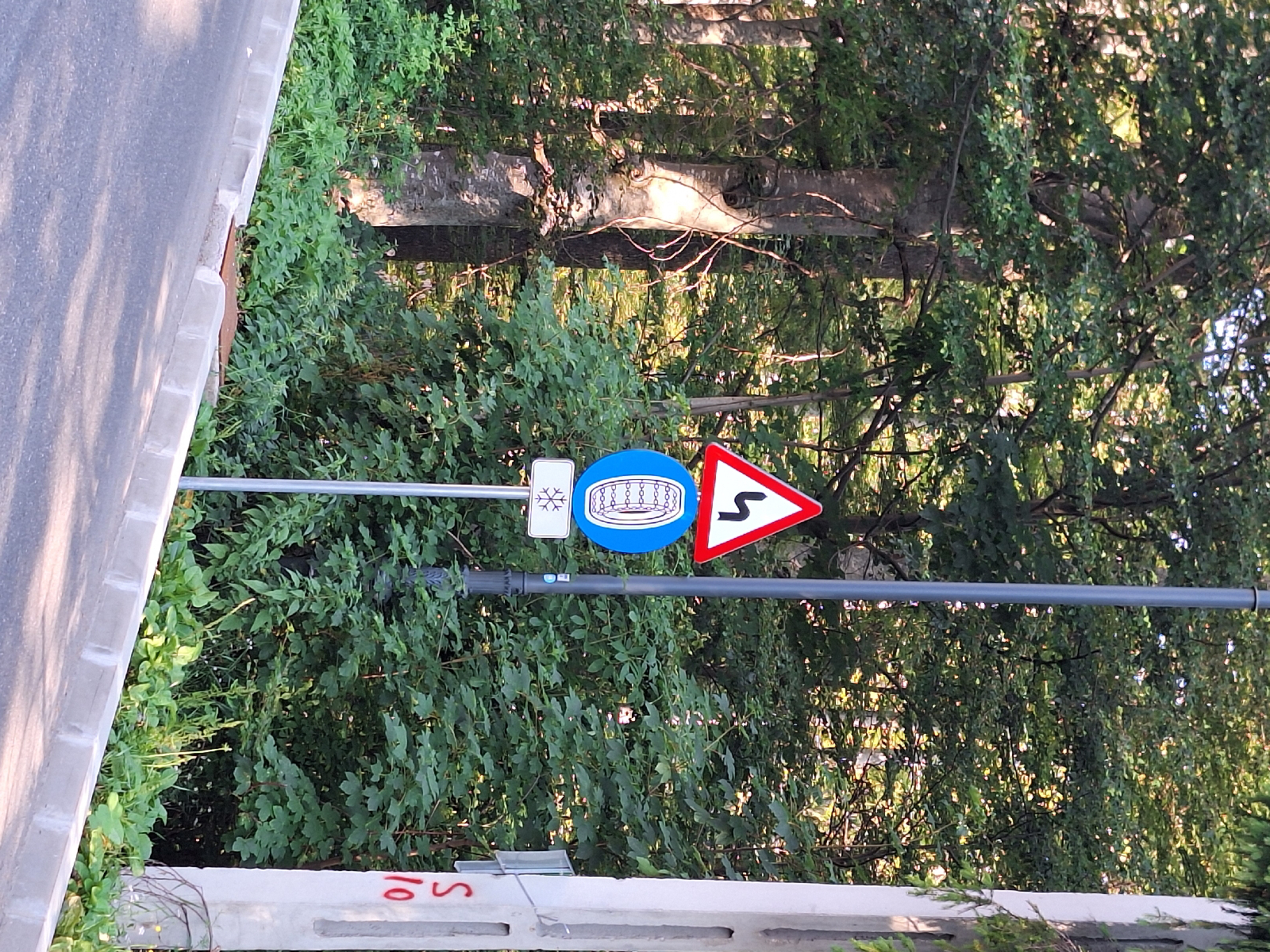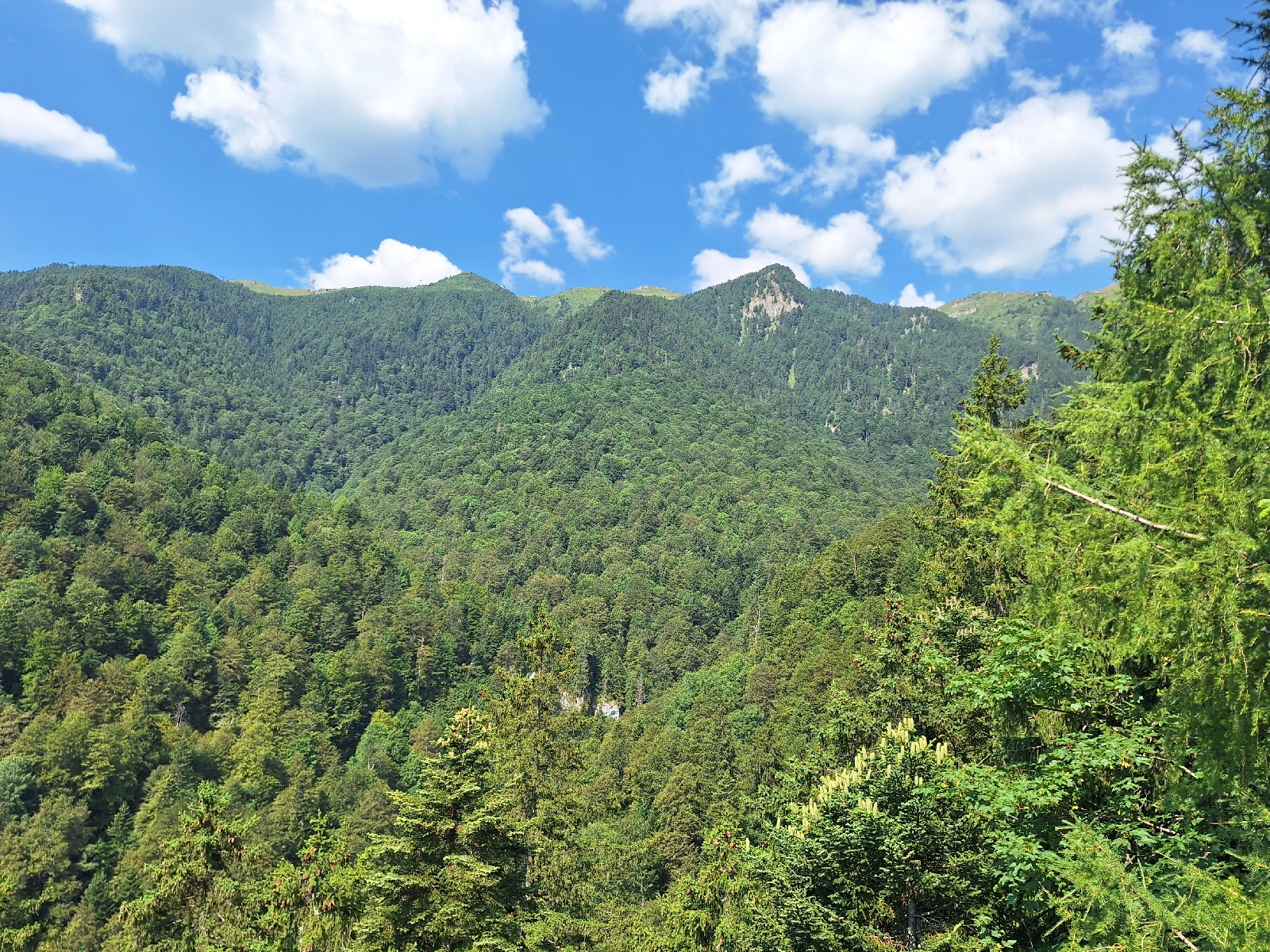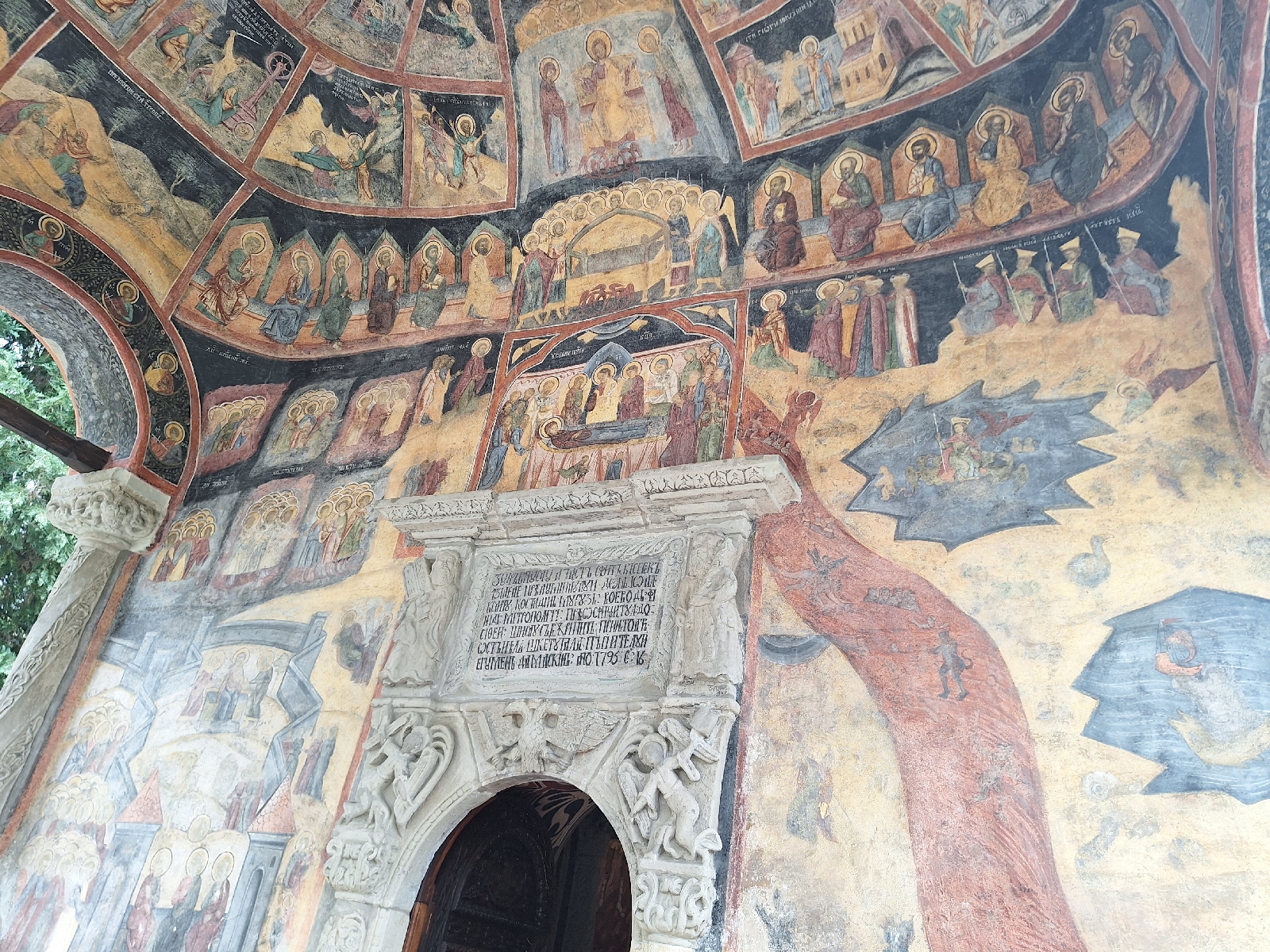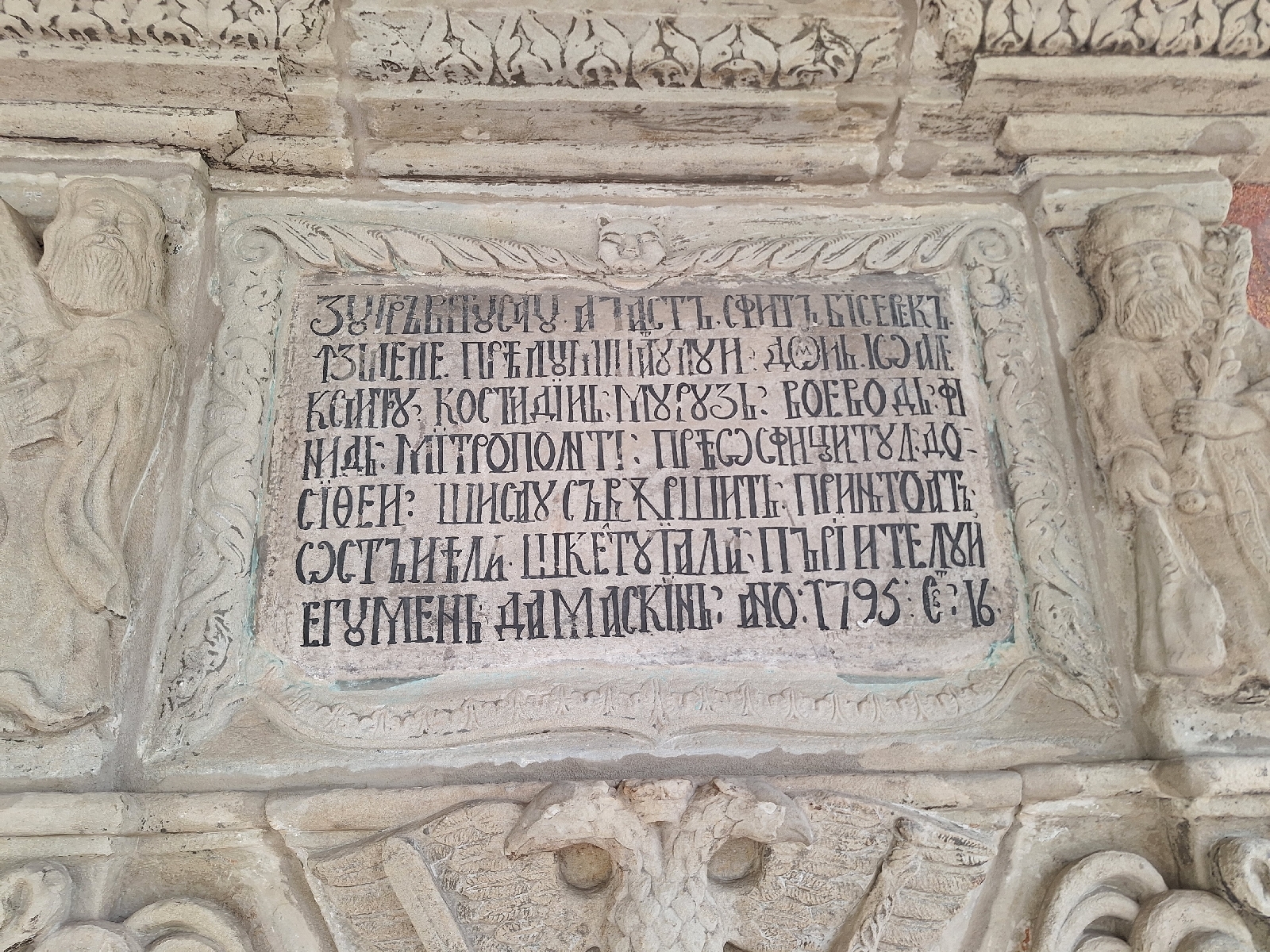When Romania emerged as a modern nation state in the mid 1800s, the country was much smaller than today, consisting of Wallachia and Moldavia in the south and east. The Austro-Hungarian Empire controlled the north and west. Franz Josef reigned as the King and/or Emporer of Austro-Hungary for 68 years, from 1848 to 1916 (1).
The story goes that King Carol I of Romania and Franz Josef hiked to a rock above Sinaia to see the height of the pass at Busteni that served as the border. The rock still bears Franz Josef's name and can be reached via a well-maintained path from the town.
We set out early on another warm day. As the town petered out up the hillside, the path (paved with stones) entered the forest and ascended on a series of tight switchbacks. The views from the rock, about 1,500 feet above the valley floor, were expansive to the north and east, although more limited to Sinaia due to recent tree growth.
A side path on the descent lead to another rock, offering views to Sinaia and up to the narrow ravine. As we emerged from the woods on the descent, a winery beckoned with glasses of chilled local white and rosé.
Peleş Castle is (sort of) on the way down. The palace was constructed in the late 1800s/early 1900s as a summer retreat by Carol I, another German Prince called to service as the Monarch of a newly-emerged Balkan nation (2). Wandering through the castle, the royalty of the early 20th century appeared to have no inkling of the future. Rooms were built, fine furniture and fixtures acquired, audiences were granted, and ambassadors were received (3) Within little more than a generation, 2 World Wars (4) and a communist takeover would completely sweep away the ancien régime.
Almost back to town, the distinctive shape of a monastery appear behind walls. The monks of the Sinaia Monastery lived a quiet life in the Carpathians until the railway was built up the Prahovo Valley and King Carol I began work on his summer Castle. The resort and ski town then grew up here, adopting the monastery's name as its own. There are two churches at the monastery: one sponsored by Carol I built in the early 1900s, and the original church opened in 1695.
The 1695 church had fascinating frescoes depicting biblical scenes in the apse, protected from the elements only by a roof and pillars, but with open sides. The base blue color and style were very reminiscent of the painted Monasteries of souther Bukovina in northeast Romania. I was very glad to have wandered in. As we left the monastery, a monk came by banging rhythmically on a wooden beam he was carrying. Whether to call the monks to prayer, or to announce the closing of the monastery, I could not tell.
(1) Similar to the slightly longer (and more recent) reign of Elizabeth II of the UK, Franz Josef ascended the throne via the abdication of his uncle; Franz Josef directly, Elizabeth indirectly via her father.
(2) The Romanians first asked a Danish prince, who demurred.
(3) Central vacuuming was even installed.
(4) The third (and final) King of Romania, Mihail, staged a military coup that overthrew the Fascist, Nazi aligned, Iron Guard government in 1944. Romania then switched sides and joined the allies, but did not recover the territory lost to the Soviet Union in the Nazi-Soviet pact of 1939 (today the independent country of Moldova and parts of western Ukraine).
Turn for Franz Josef Rock
Huge arms collection in the palace
This portrait of Romania's Queen Elizabeth and her daughter was very vivid. Bird inlays in Ebony chest
Turkish stained glass windows
The Palace with scaffolding
Sinaia Monastery
Vivid frescoes in aspe of the original monastery from 1690.
Crucified Jesus pierced by Roman guards
Raising Lazarus from the dead
Romania, despite being a Latinate language (like French, Italian, Spanish, etc.) used the Cyrillic, not Latin alphabet, until the 1860s
The transfiguration, fresco inside the church
The Ascension of Mary
Hay bales were all over town. Probably related to an construction project to put the town's electric wires underground.
The Trans-Carpathian train to Braşov






























No comments:
Post a Comment